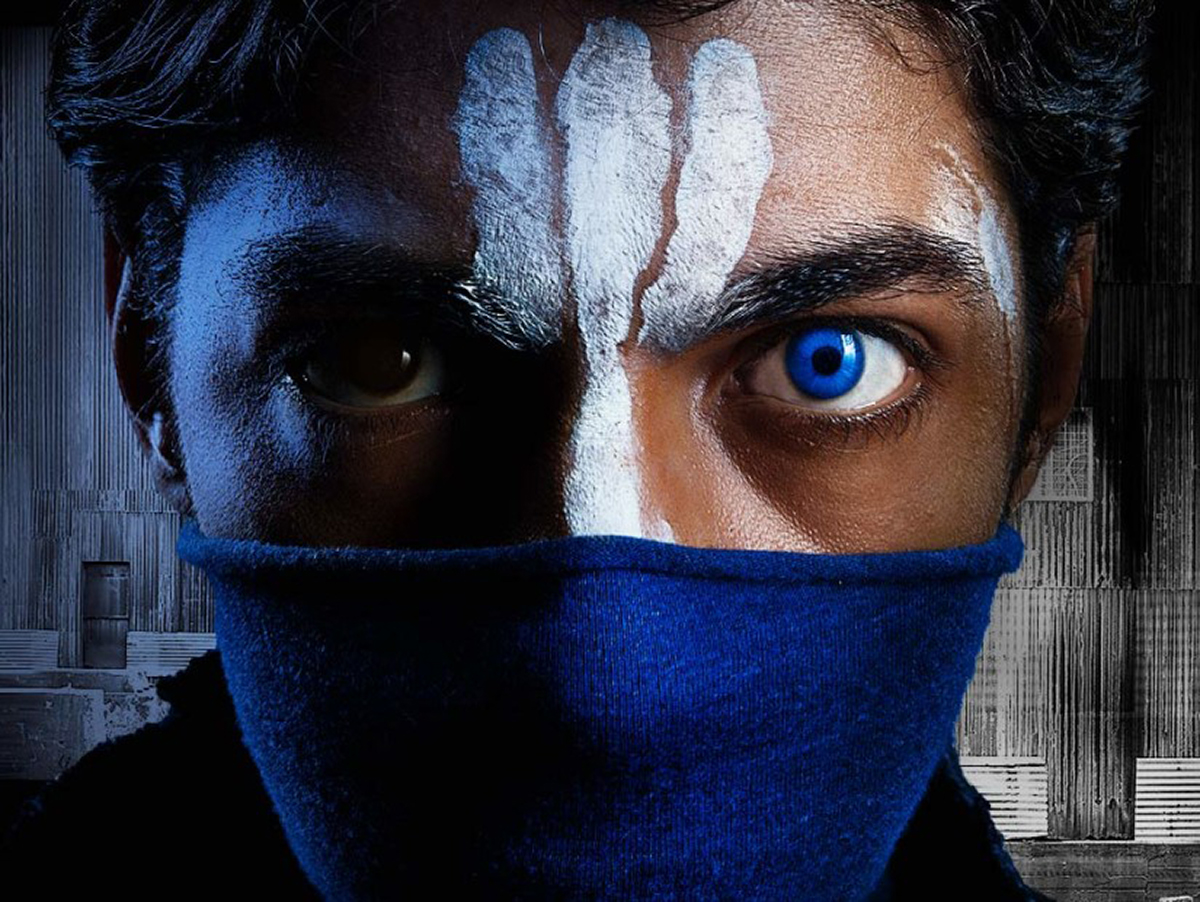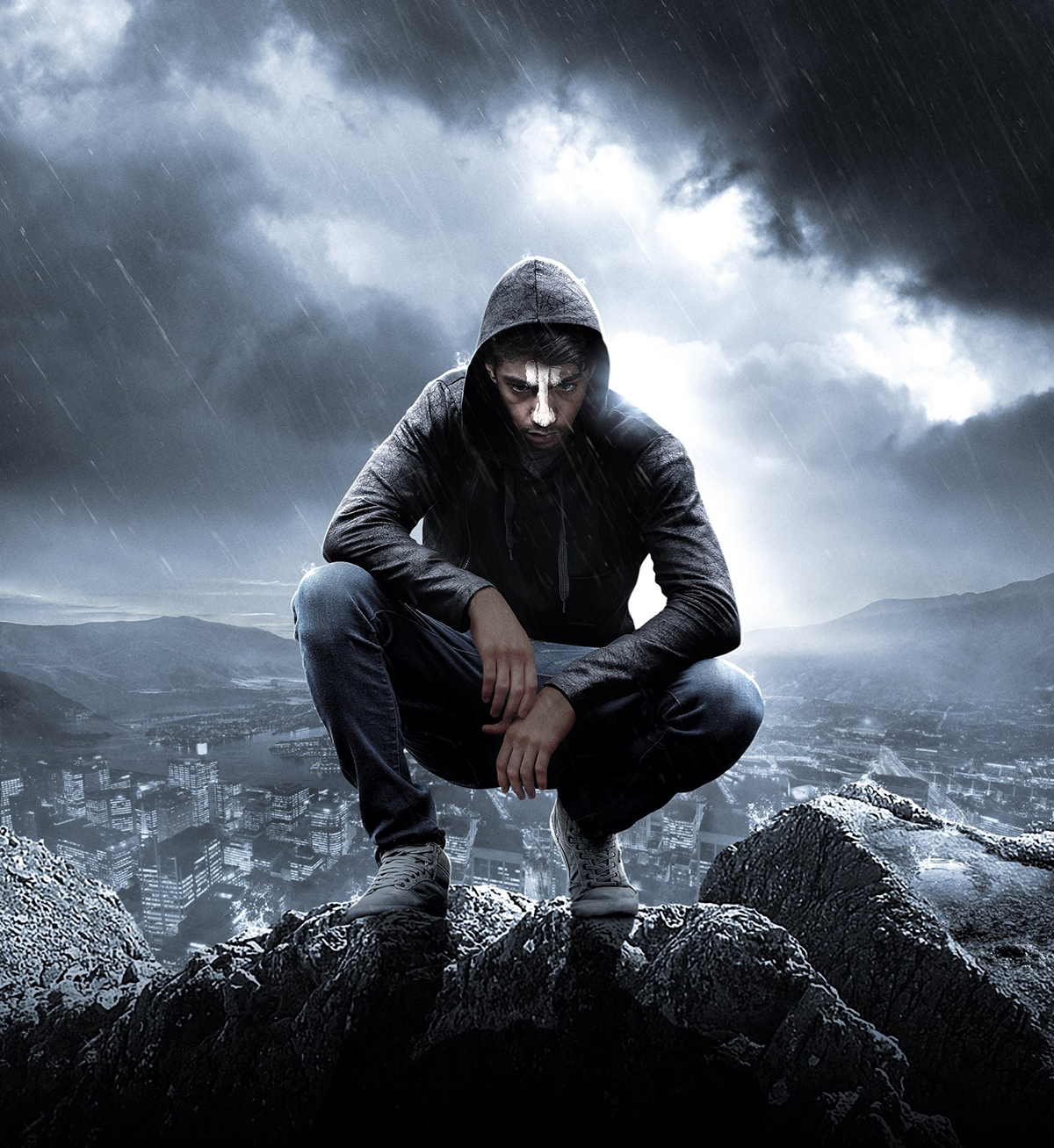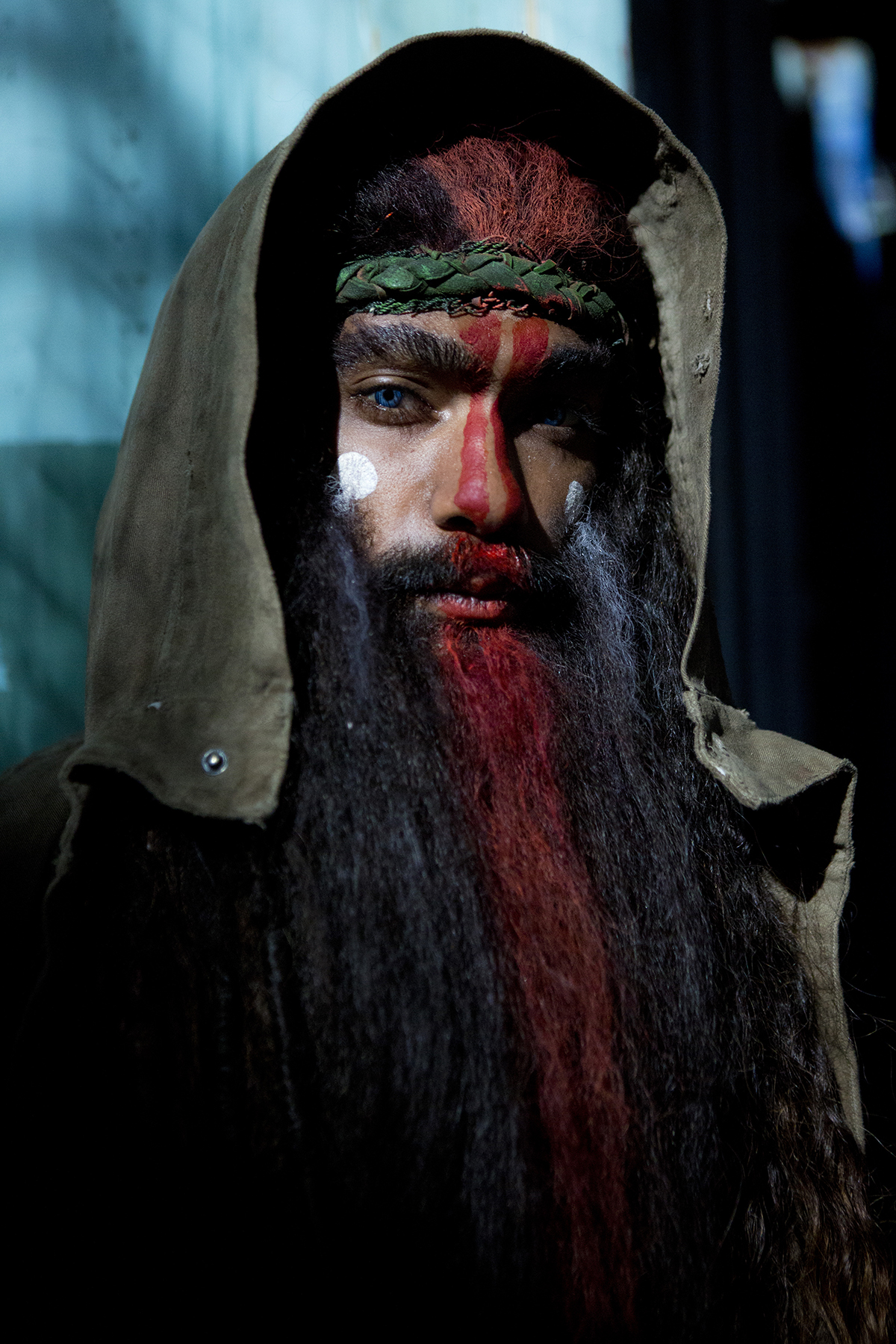
Not so fictional Cleverman
The dystopian vision of the ABC TV series Cleverman ratchets up the tension in its second season. In the real world, nervous speculation about property bubbles and a resurgence of the Global Financial Crisis has people consuming Orwellian content by the bucket-load in a frenzy of cathartic dread and vicarious release. To this time of great social and technological uncertainty, Cleverman’s Indigenous writers and producers bring a unique and unsettling perspective.
For a couple of years now, some of our old people have been muttering about apocalyptic rumblings in the landscape and the Dreaming world, of ancient things waking up or descending to leave their tracks in remote locations. Those things are out there, moving, setting things in motion that will radically change the way we live. The warning is clear: when you stop moving with country, then country will move you, in ways that are seldom gentle.

Hunter Page-Lochard as Koen West, Cleverman, promotional image courtesy ABC
These rumblings play on my mind as I struggle to navigate my urbanised Anthropocene environment littered with desperate infrastructure projects pressed like Band-Aids of concrete and steel to staunch the haemorrhaging of a fragile economy. I squeeze daily past work sites populated by an army of bored workers in hi-vis vests taking turns to hold a stop sign at the end of the mining boom, an effort to massage precarious unemployment figures. So it is with a sense of gleeful unease and anticipation that I enter the similarly gritty world of Cleverman’s second season.
As First Nations people, the creative team behind the series is familiar with apocalyptic disruption to culture and community — for them it is not an imagined future scenario, but a non-fictional reality of intergenerational trauma from dispossession. As such, there is a rich vein of lived experience and narrative involving both contemporary interventionism and past policies of genocide and removal, informing an innovative approach to the overworked dystopian genre.
The first season explored segregation and the myths of primitivism and progress through the introduction of the “hairies” of Aboriginal lore, an ancient culture uneasily labelled by the authorities as sub-human, despite their superior strength, cultural complexity and long lifespan. This recalls similarly disingenuous narratives of racial supremacy and primitivism deployed during Australia’s colonisation.
The second season boldly introduces the theme of biological genocide, referencing the many historical policies of breeding out the natives — like the Stolen Generations and the Victorian Half-Caste Act — which were the first order of business at Australia’s Federation. These efforts at extermination live today in custom if not in law, with Aboriginal people constantly being asked by settlers, ‘What percentage Aboriginal are you?’ in daily acts of micro-aggression imposing White limits on Black identity. This experience of past and present threats to Indigenous existence informs the nuanced exploration in Cleverman of a similar ‘final solution’ imposed on the hairies, expedited in the plot through high-tech genetic therapy.
This innovation is developed by a corporate villain (Iain Glen, best known as Jorah Mormont aka Sir Friendzone from Game of Thrones) who is also demanding ‘access to the Dreaming’ to weaponise arcane Indigenous knowledge. This brings to mind the intriguing notion that the psychedelic hippies of Bill Gates’ generation first conceived the idea of cyberspace through the appropriation of Indigenous ritual ‘spirit journeys’ that utilise Native American psychotropic substances like peyote.

Clarence Ryan as Jarli the Bindawu warrior, Cleverman, promotional image courtesy ABC
In comparison to the brightly lit long shots and use of open space employed in the first season, the early episodes of season two are characterised by darker, more internalised settings, close-ups, mid shots and a claustrophobic mise-en-scène. This sense of enclosure emphasises the increasing confinement and restriction imposed on the protagonists by shady corporate and government forces. The tight spaces are relieved and even jarringly juxtaposed with newly introduced wilderness settings showing the hairies’ traditional lands in inaccessible and remote mountains, with some breathtaking drone shots of waterfalls, bushland and panoramic high-ground country.
Even though there has been a discernible change of gears this season, the pace of the show is still painstakingly slow for the genre. Veteran Comic-Con nerds must be wondering, ‘When will this Cleverman Koen get clever already and start kicking some butt like a real superhero?’ Unlike the the supermen of the Marvel and DC franchises, this Indigenous hero is taking his sweet time to grow and acquire meta-human status. Although we see a non-lethal blast skill emerging (reminiscent of the “fus roh dah!” from the popular game Skyrim), it’s a little unimpressive as superpowers go. Koen also has a spirit bird who begins to guide him, and Wolverine-like powers of regeneration. The power of his law-stick is still uncertain, but is likely to end up resembling Thor’s hammer in its magical properties if the highly derivative pattern of Koen’s ability continues to develop as it has.
Cleverman’s essential premise draws on the real-life role of Clever Men within law; I find myself torn between a longing to see the traditional powers of Clever Men represented and a relief that these secrets are being kept out of the public domain.
Koen’s older brother Waruu comes more fully into his role as a “Jacky-Jacky” — a collaborator with colonising forces and institutions against his own community who facilitates exploitation in the name of Indigenous development and national harmony. This is a sensitive and explosive issue in our communities, originating with native mounted police and guides in the early days of exploration, boldly examined in Cleverman. Apart from this Uncle Tom-like transformation of Koen’s nemesis, the character development so far is fairly minimal in the transition to season two.
But black characters have always occupied an awkward space in superhero fiction, from Catwoman to Luke Cage, and I’m sure that over time character complexity will build with the awareness and comfort levels of the wider audience. In the meantime, I will be voraciously consuming every second of Cleverman season two online, and will consider it data well-spent.
–
Cleverman season two, directors Wayne Blair, Leah Purcell, writers Jane Allen, Stuart Page, Justine Juel Gillmer, Ryan Griffen, performers Hunter Lochard-Page, Iain Glen, Tasma Walton, Frances O’Connor, Deborah Mailman; ABC TV, 2017, weekly episodes from June 28
Top image credit: Hunter Page-Lochard, Cleverman, promotional image courtesy ABC






